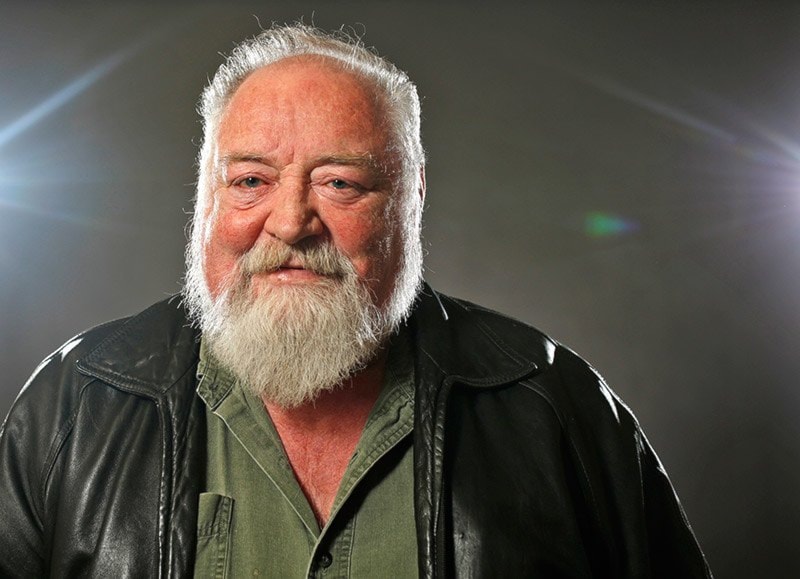The 2016 Yukon prospector of the year is a calm, towering, middle-aged man with a Santa Claus-like beard.
He is also a man of few words.
On Monday, when Eugene Curley accepted the award at the Yukon Geoscience Forum banquet, he told the crowd he’d like to thank everybody — and immediately stepped off the stage.
“It’s a great honour,” he told the News last week.
As a child, Curley heard about the Klondike and legendary stories from the gold rush.
And unlike most of us, he stuck to his childhood dream.
He started working in mines in the Northwest Territories in the 1970s before moving to the Yukon in 1978.
A couple of years later he tried his hand at placer mining before turning his attention to prospecting for hard rock minerals — including gold.
He prospected around Dawson, Faro and Ross River, and even did some stints abroad in Australia and South America.
“I’ve had some success,” Curley said. “I found some placer gold when I was mining.”
Less encumbered by modesty, the Yukon Prospectors Association proudly highlighted five of his discoveries that were sold to mining companies.
“Eugene is one of those remarkable Yukoners that have earned much of his living solely through prospecting and vending of his mineral properties and through placer mining,” the association said in a release.
“The trait of self-reliance through the peaks and especially the deep lows of Yukon’s mining and exploration history speaks to his tenacity and persistence.”
While placer mining can offer good returns when price of gold is high, it requires taking a lot of risks and working long hours.
“I used to work from seven (a.m.) until midnight,” Curley said.
So why would anybody do that?
“It’s a challenge,” Curley said. “It’s something you get to really like: the outdoors, the thought you could just find something around the next rocks, it keeps you interested.”
Placer mining is a competitive industry, he says, but that doesn’t mean miners don’t have each other’s backs.
“In times of crisis or something like that, you could count on them to assist you,” Curley said.
Friends and colleagues praise Curley as one of the last “old-school” prospectors.
“I can say that prospectors can be divided into two groups, the more modern explorationists, often guys, gals with a geology degree, (who) use science to prospect,” said Ron Berdahl, president of the Yukon Prospectors Association.
“The others are the ones you might see portrayed in old films, these are the guys (who) see prospecting as an art, there is an intuitive feel, an unexplained connection between the mind and the minerals.”
And that’s who Curley is, he said: “an artist in his own right.”
“It is more and more difficult for the artist prospector to get the strictly science-based companies to understand this dying art form,” Berdahl said. “But Eugene has, by fits and starts, made it work over the decades.”
He even found one property — Dows Gold, later sold to a mining company — through dowsing.
But from his years looking for the yellow stuff, Curley also remembers fondly the people he got to meet, especially helicopter pilots.
“There were some exceptional pilots I’ve run into over the years,” he said, citing one Bryan Parsons of TransNorth Helicopters. “He took me off a mountain in a snowstorm once and probably saved my life.”
It’s clear Curley misses the old days when he was on his own looking for gold.
He still keeps tabs on the price of gold — and even looks at soil samples when he’s out in the bush.
“(But) it’s a young man’s occupation,” he said, laughing.
Contact Pierre Chauvin at pierre.chauvin@yukon-news.com
